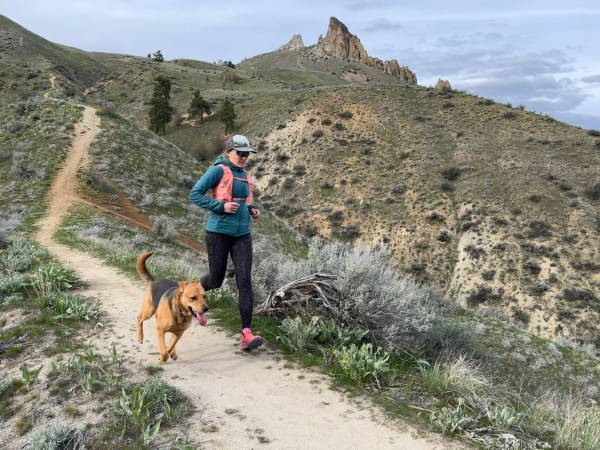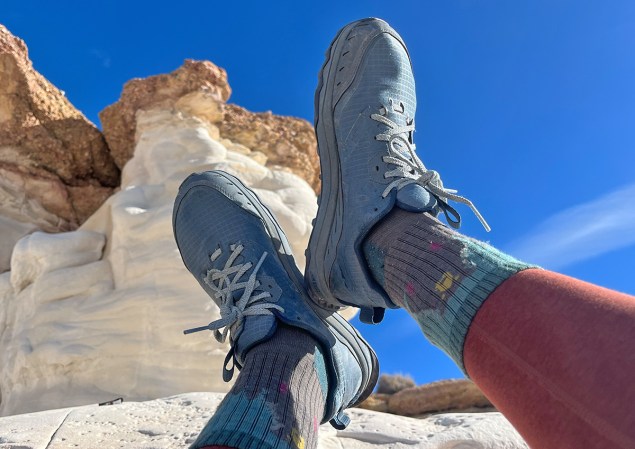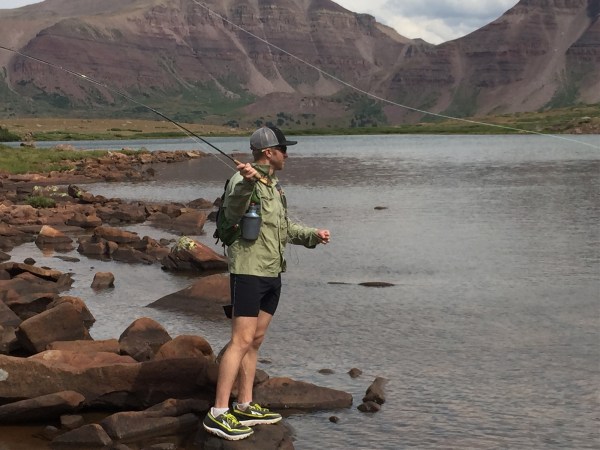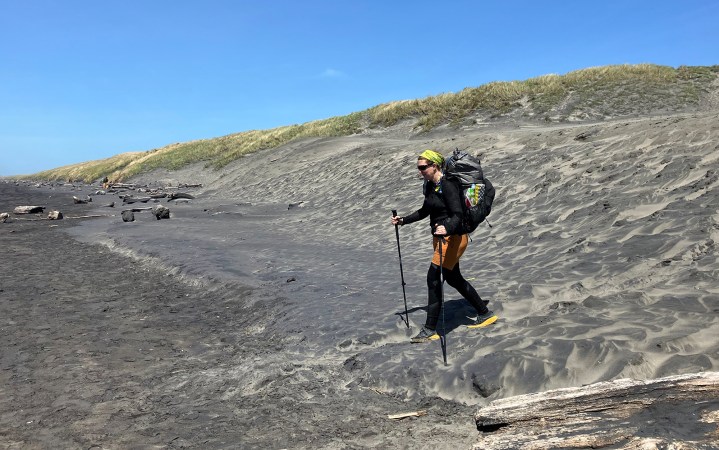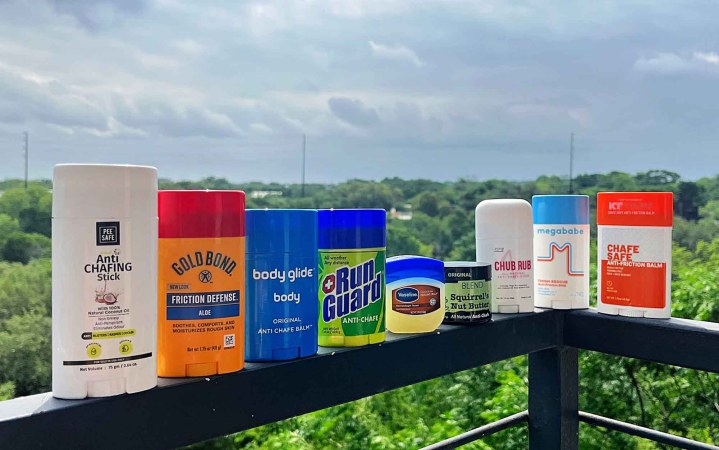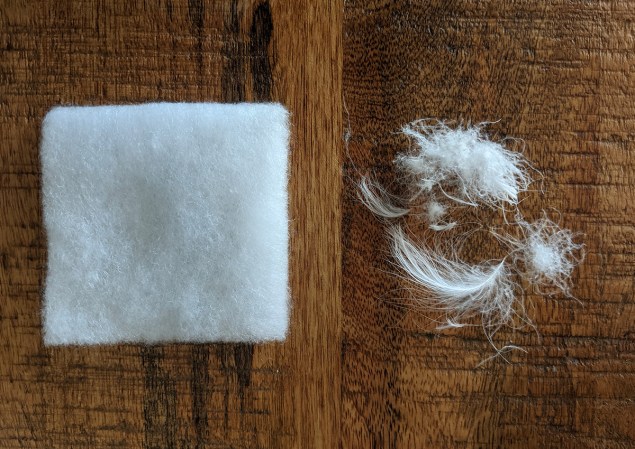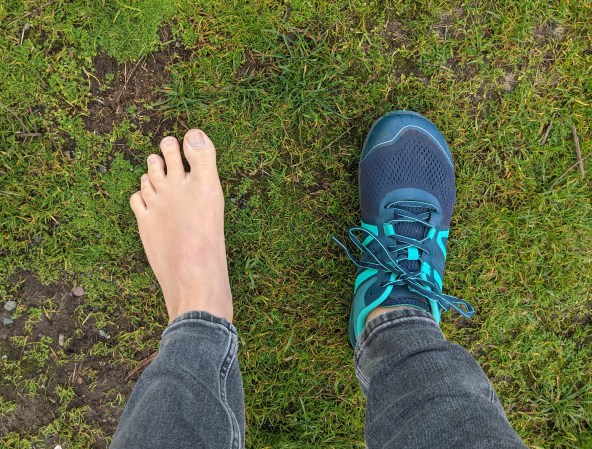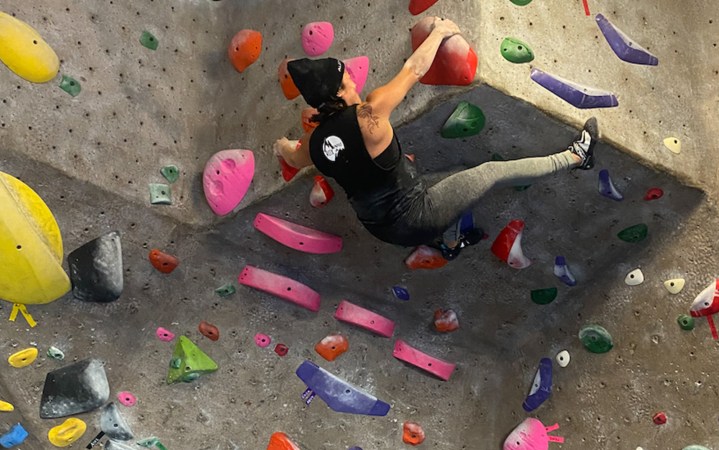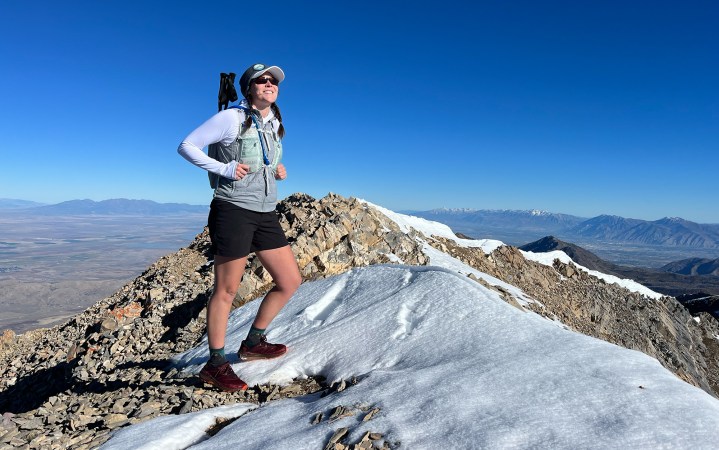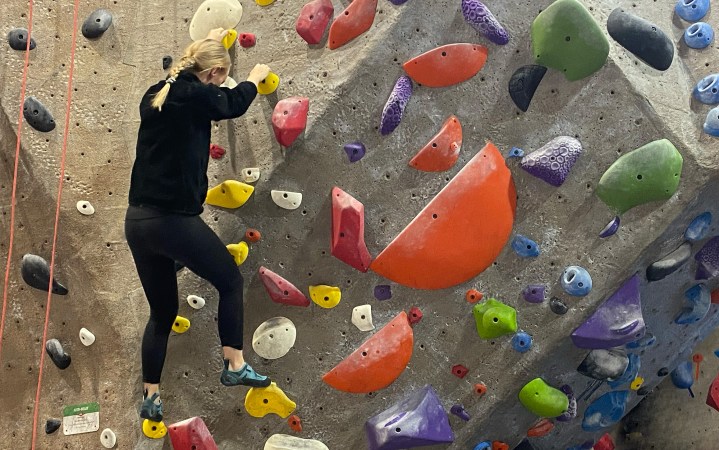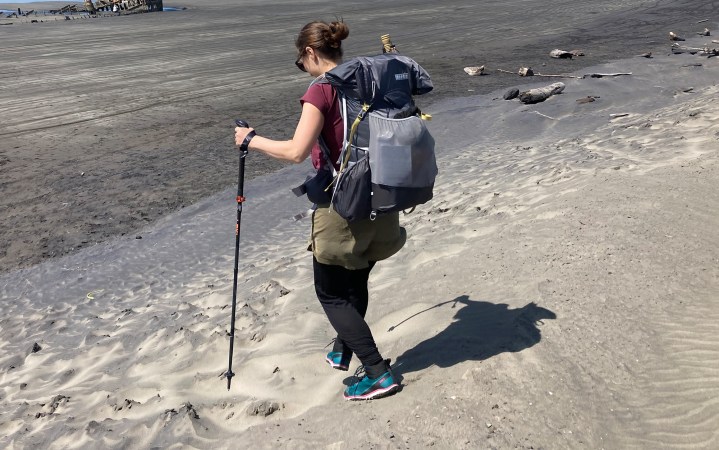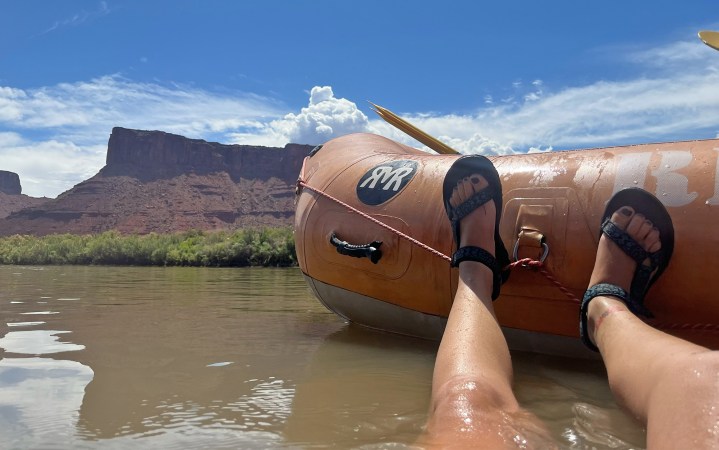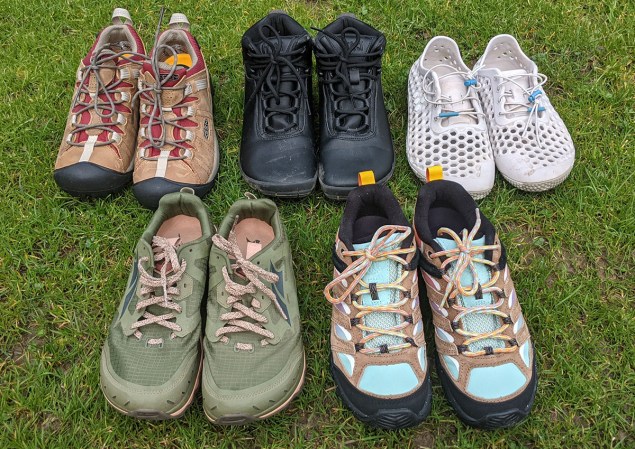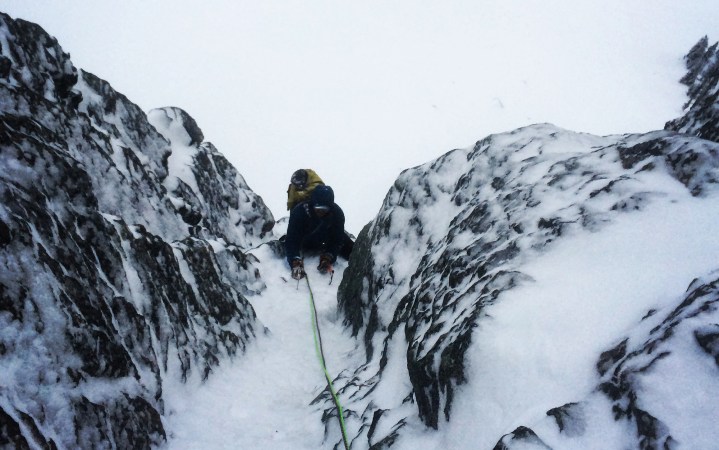It was 2011 the first time I tried to run in barefoot shoes. I was in my mid-20s, healthy and averaging about 20 miles a week. Born to Run was on my bookshelf (of course), and I had a brand-new pair of Vibram Fivefingers, ready for the city streets. I figured that first run, I’d keep it light, maybe go 2 miles and see how I felt.
It was awful. With each step I could feel my midfoot seizing up, a strange sharp pain that eventually cramped up my feet entirely. I made it about half a mile before I gave it up and gingerly walked home. My first experience pretty much mirrored the cultural zeitgeist around barefoot shoes at the time. The idea that a lot of running-related injuries could be mitigated by getting back to the basics of foot mechanics appealed to people, but plenty ended up with injuries, like Achilles tendonitis, plantar fasciitis, or metatarsal fractures. It took months before I was anywhere near my original mileage and, meanwhile, barefoot shoes began to fade, and the current maximalist shoe trend began to ascend.
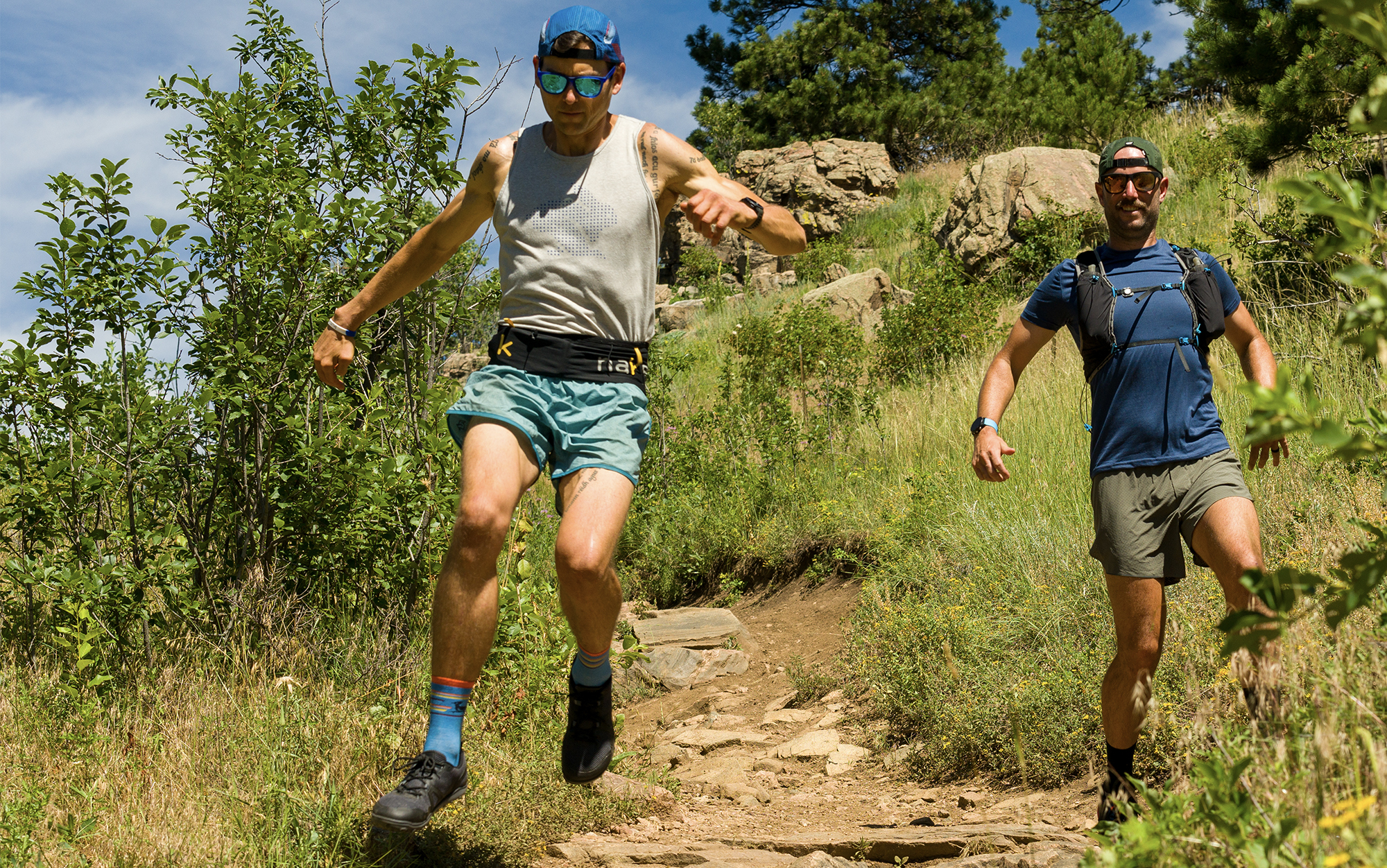
Xero Shoes
But now barefoot shoes are coming back — perhaps in response to some of the excesses of the current maximalist movement or due to media personalities like Joe Rogan bringing the idea to new audiences. As a gear reviewer, I’m pretty stoked whenever someone asks me about barefoot shoes. But remembering that rough initial transition period — and all the injuries that other runners sustained in the process — has me heaping caution on people interested in trying it as well. So I set out to learn more about natural foot functioning. I asked a slew of experts, including physical therapists, pedorthists, and footwear designers, about how to make the transition from traditional running shoes to barefoot.
How Modern Footwear Supports, and Changes, the Foot
Nothing surprised me more on that first barefoot run than realizing that, without traditional running shoes, my feet were essentially piles of mush at the end of my legs. According to Irene Davis, Ph.D., P.T., who has been researching barefoot mechanics for decades, most people are surprised to learn that their feet are something that might need strengthening. “It’s no different than any other part of the body. It’s just that we assume it’s not a muscle down there. It’s just your feet,” Davis told me. “There are 26 bones, 33 articulations, or joints, each with six degrees of freedom of motion.”
Modern footwear is designed to support all this, but in the process, they can cause these structures to weaken over time. They can also interfere with some of the natural functioning of the foot.
Elevated Heels
One of the most well-known attributes of athletic footwear, especially running shoes, is a padded heel. I had always assumed that shoes were designed this way to soften the impact for heel strikers when running, but it turns out that isn’t the primary reason: It’s to reduce load on the Achilles tendon. And, over time, this can cause the Achilles tendon to shorten, further reducing its ability to carry a load. No wonder there were so many Achilles-related issues in the first wave of barefoot running.
But elevated heels (also referred to as heel drops) have a subtle but important impact on the kinetic chain of your lower body. It shifts your body’s center of mass forward. If you kept the same posture in a shoe with an elevated heel as you do when standing flat on the ground, you’d start to tip over, so instead you change the angle of your knees, your hips, and your lower back so that you are standing straight again.
Stack Height
Stack height refers to the thickness of the shoe between your foot and the ground. All shoes have some sort of stack height to them — even a Vibram FiveFingers has about 5mm of rubber and insole between your foot and the ground. But contemporary running shoes typically range from 25mm to upwards of 40mm. And most of this extra material is a specialized foam in the middle of the shoe, known as the midsole. There are two things that this increased stack height is affecting. The first is your proprioception, or your body’s ability to feel and perceive the ground. This comes up less often for people who exclusively run on a treadmill or on roads, but you really notice it when hiking or trail running.
The idea is that a ton of your body’s nerve endings terminate in your feet, so when you walk or run, the sensory input of what’s underfoot — rocks, uneven surfaces — gets sent up your kinetic chain, and your body makes micro adjustments that inform your posture and gait, reducing the strain on your knees and hips. Davis also explained that we have “sensory organs in the skin and in the structures of the foot so that you can sense how hard you’re landing.” That’s why people tend to switch to a lighter midfoot or forefoot strike versus a harder heel strike when they first use minimalist shoes.
The arch of the foot is designed to absorb and distribute much of the impact of running, but when you just smack your heel against the ground, the arch isn’t activated and all of that force gets sent right up the kinetic chain into your knees and hips. One individual I spoke to said that an easy way to understand this is to imagine jumping off a short height: Most people will land on their forefoot or midfoot. No one lands on their heels. Increased stack height can also negatively affect your balance, especially at the upper end of the spectrum. It’s just a lot easier to roll your ankle when your foot is elevated 40mm off the ground than if it is only 5mm off the ground.
Flared Outsoles
Some cushioned running shoes flare between the midsole and the outsole. There are two main reasons for this. The side to side flare can help reduce the tippiness of the shoes (caused by the high stack height) by increasing their overall surface area. That can help mitigate the chance of rolling your ankles. The flare at the back of the heel can help to absorb the force of striking on your heels while running. The problem, according to Davis, is how the flared sole impacts your joints, including your ankles, knees, and hips.
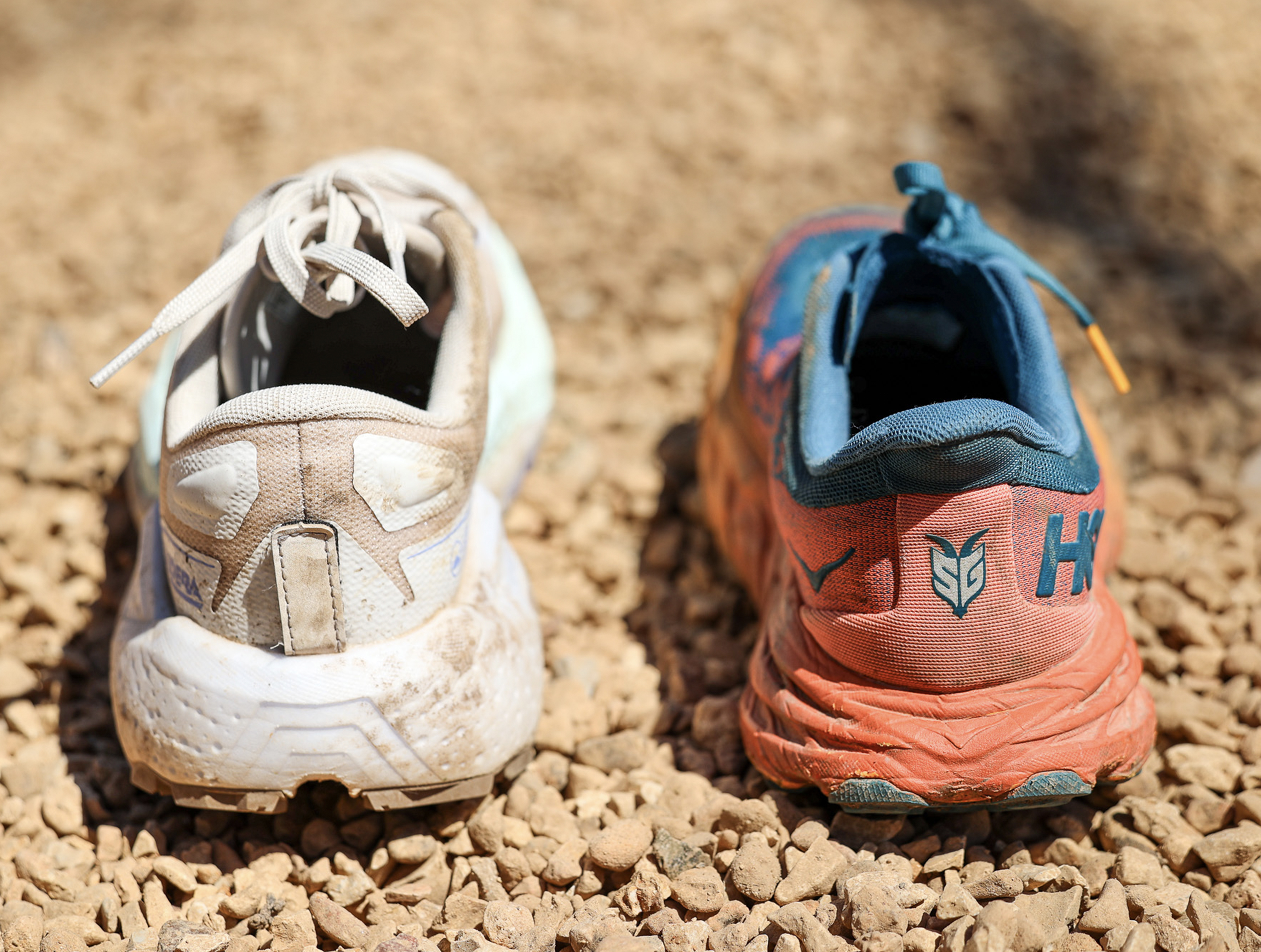
Natalie Krebs
Increasing the surface area of your foot, effectively what these shoes are doing, also increases the distance between where you hit the ground (the outside edge of your shoe) and where the rotation points are in your ankle, knee, and leg. This, in turn, increases the amount of force required to move those joints, putting more strain on them. This is one of the reasons why it’s such a bad idea to wear cushioned running shoes past 500 miles, which is when the cushioning typically breaks down. The flared soles increase your dependency on the cushioning to absorb shock.
Arch Support
We tend to think of arches in terms of shape, with high arches requiring a greater degree of support than low arches. But Davis told me the shape and size of your arch is not as determinative as some people think. “There is a wide range of normal in terms of arches, and even though we all have the same bones and general alignment, there is a lot of variability.”
She went on to explain that it’s less important if you have a high arch or a low arch, and much more important if you have a weak arch or a strong arch, as this is the primary mechanism by which your body absorbs shock and distributes weight, including for walking and running. She told me that in her practice she found that people didn’t even realize that ”there are 10 muscles, arranged in four layers, in the arch of your foot.”
Arch support will help prevent your arch from tiring out (as mine did on that first barefoot run), but it disrupts the arch’s ability to absorb shock. And over time, it will weaken your arch. In one study, orthotics were given to individuals with healthy feet to see what effect wearing them for twelve weeks would have on their musculature. At the end of the study period, the people with the orthotics had a 10 to 17 percent decrease in their intrinsic foot muscles.
Narrow Toe Boxes
Until recently, the majority of toe boxes — for casual and athletic shoes alike — slanted sharply inward on both sides, sort of like a torpedo. The only problem? “A healthy foot does not look like a torpedo,” John Wadley, VP of Product Development at Xero Shoes, told me. “A healthy foot is splayed out and looks more like a paddle. That helps us with balance.”
While many contemporary running shoes now have wider toe boxes to allow for toe splay (a trend from the original barefoot movement that stuck around), there are still many brands with narrower toe boxes, especially dress and casual shoes. Shoes that push your toes together can, over time, reduce mobility and flexibility. For some people, especially women, it can also exacerbate bunions.
There are two reasons that forefoot splay is important. While running, it means that the metatarsal joints of your foot can fully activate, allowing your arch to maximize the amount of shock it can absorb. But even for individuals who just plan to walk or hike, toe splay is important for balance. “Most of the time when I do balance testing, people are worse in their [traditional] shoes,” Scott Socha, a pedorthist with a shoe store specializing in barefoot shoes told me. That’s because traditional footwear often compromises the natural triangle that your foot forms between your heel, big toe, and pinky toe. Socha told me that his staff had experimented with putting rubber bands around their toes (to mimic the feeling of a compression sock or tight toe box) and were surprised at what a big effect it had on their balance.
Stiff Soles and Toe Springs
Another way traditional shoes can also inhibit toe flexibility is through the design of the sole. Some shoes, especially hiking shoes and boots, have unusually stiff soles that don’t bend. If your shoe can’t bend, your toe won’t bend, and over time you will lose flexibility in your toes. Running shoes, conversely, often incorporate a toe spring, where the toe box of the shoe is pushed up.
Over time, this upturn can reduce big toe flexibility. Socha told me he’s been noticing people whose toes don’t touch the ground, and instead are slanted upward. He believes this is caused or exacerbated by wearing shoes with a rocker bottom, or toe spring for extended periods of time. “We really want to have a healthy foot where the heel, the balls of the foot, and the toes are in the same plane. When we walk around in running shoes all day long, then our toes are pointed up in the air.”
Wearing running shoes with a toe spring in everyday life can also negatively affect our posture. “If the front of our shoes are sprung, our toes are pushed up,” says Nicholas Charlier, Vivobarefoot’s Education and Community Lead. “That changes how we stand. And if we stand on cushion, we tend to step back into that cushion.” “So often our backs will bend and our hips will flare.”
What This Means for You
Some people can go their whole lives without experiencing any kind of biomechanical issue as a result of their footwear choices, even running long distances — and studies on barefoot running, in particular, are mixed as to the pros and cons. But there are also people with persistent injuries — in their knees, hips, plantar fascia, achilles — that may stem in part from how modern running shoes alter your biomechanics and stride, and increase the force with which you strike the ground with each footfall.
Zach Zenteno was one individual who found that many of his running injuries resolved after he transitioned to barefoot shoes. “In January 2022, I started training for my first full-distance Ironman and by March, a string of injuries kept me off my feet. Back pain and what I thought were shin splints led me to the chiropractor, where he explained that the elevated heel in my running shoes (at the time I was running in On Cloudflows with a 9mm drop) could have contributed to a non-natural running gait, ultimately leading to injury.”
Zach picked up a pair of barefoot shoes and found that his “perception of how fast to run, how much force to exert, cadence, and other key aspects of running was massively enhanced.” After a year of fits and starts, he was eventually able to transition all of his training to barefoot shoes. “It’s worth noting that in addition to my screwed up back, I was also dealing with runner’s knee and a pretty gnarly calf strain throughout the course of my training — all of which slowly but surely dissolved away after switching my shoes. Before I switched, many of the conventional recovery methods at my disposable — foam rolling, Graston, stretching, strengthening exercises — were just band-aid solutions.”
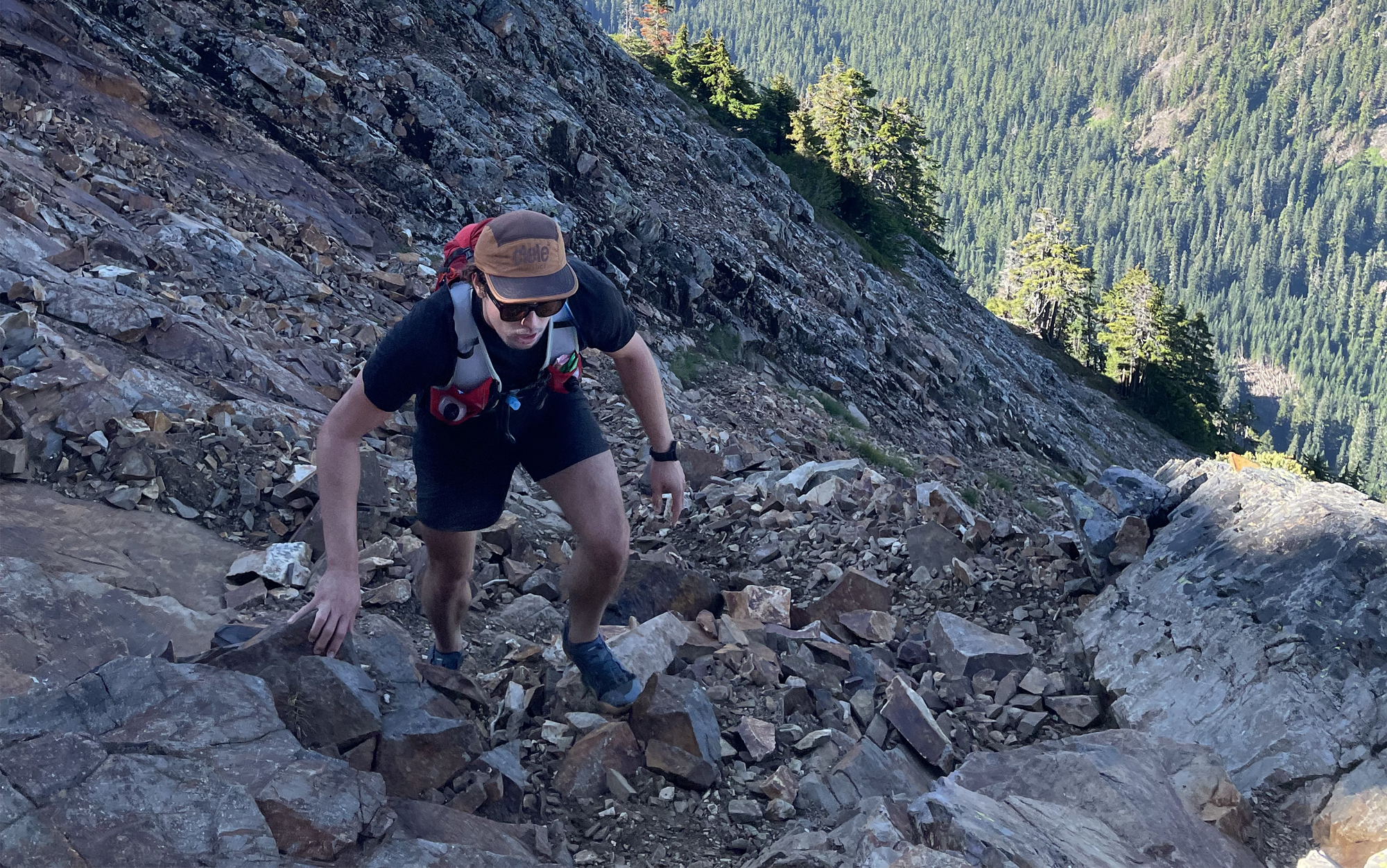
Martin Maisonpierre
When I first tried barefoot shoes, I didn’t have any systemic injuries I was trying to resolve, or races that I was preparing for — I was just curious to see what it would be like. After I got back up to my typical runs of between 4 and 6 miles, I started to notice something different. I was having fun, more fun running than I’d had in years. Barefoot shoes just felt more playful and — once my foot strength increased — I felt lighter and more carefree.
It was like being a kid again, especially if I was trail running. The mileage started to tick up for no other reason than I felt like it. Eventually I was running 10 miles or more on the weekend in a single stretch. This is something that people don’t talk about as much with barefoot-style running, but it just feels good. (You also don’t have to replace your running shoes nearly as often, which feels good to the wallet.)
Because of the complexity of the foot’s mechanics — and variation between individuals — it is difficult to say what any one individual’s experience with barefoot shoes will be. Overpromising results did not go well for the first wave of barefoot running, and the individuals I spoke to for this story were adamant that barefoot shoes were a tool that can be used to help strengthen feet and improve biomechanics — not a panacea in and of themselves. Throwing on a pair of barefoot shoes and heading out for your daily run (like I did) is one of the worst ways to transition. Here’s how to do it right.
How to Transition to Barefoot Shoes
The shoes you wear now — for running, hiking, everyday life — probably have some if not all of the modern design elements affecting our feet. Over time, our feet and bodies have adapted to these changes, affecting our gait and posture. Decades of neglecting the muscles in the arch, the stretch of our Achilles, and the flexibility of our toes mean that our feet have a lot of relearning to do. It’s going to be a long time, months if not years, before you’re heading out for long runs in barefoot shoes. If you’re anything like me, you’ll be surprised by how much harder it is than you expected. That’s the bad news.
The good news is that it doesn’t have to be all or nothing — in fact, most people will be better off holding onto their regular running and walking shoes for a while. Multiple individuals I spoke with said they now encourage their clients to incorporate barefoot shoes into their life in small bursts — anything from going to the grocery store to tacking on five minutes of running at the end of a workout. They find that this is most often successful when clients make some changes to their everyday footwear as well — reducing stack height and heel drop, for instance — but that most clients will start to trend toward more minimal shoes over time even without that.
This all means that you could start transitioning today, without even purchasing a pair of shoes. Just take your shoes off, in your home or in your yard, and start to lengthen the amount of time you spend barefoot.
The Cardinal Rule for Transitioning to Barefoot
Something I heard over and over again when talking to barefoot experts is that, when you’re transitioning, you have to take it slow: definitely slower than you want to, and probably slower than you think your body needs to. “Pain is a sign that we are trying to ask the body to change too quickly,” said Socha. “Respect that.” If you are actively training for a race or other endurance event, this is not the time. Wait until you get to a slower period in your activity schedule to try out barefoot shoes.
Walk Before You Run
Whatever your barefoot goals are, you need to start by walking. Fortunately, you don’t need to overthink this part because you’re probably already walking correctly. “Heel striking when walking is normal,” Socha told me. The major difference between walking with barefoot shoes and walking without barefoot shoes is often the force with which you land on your heel. “We are adapted to land on our heel,” said Davis. “The heel pad actually has enough cushioning so that it doesn’t hurt when you land on your heel.”
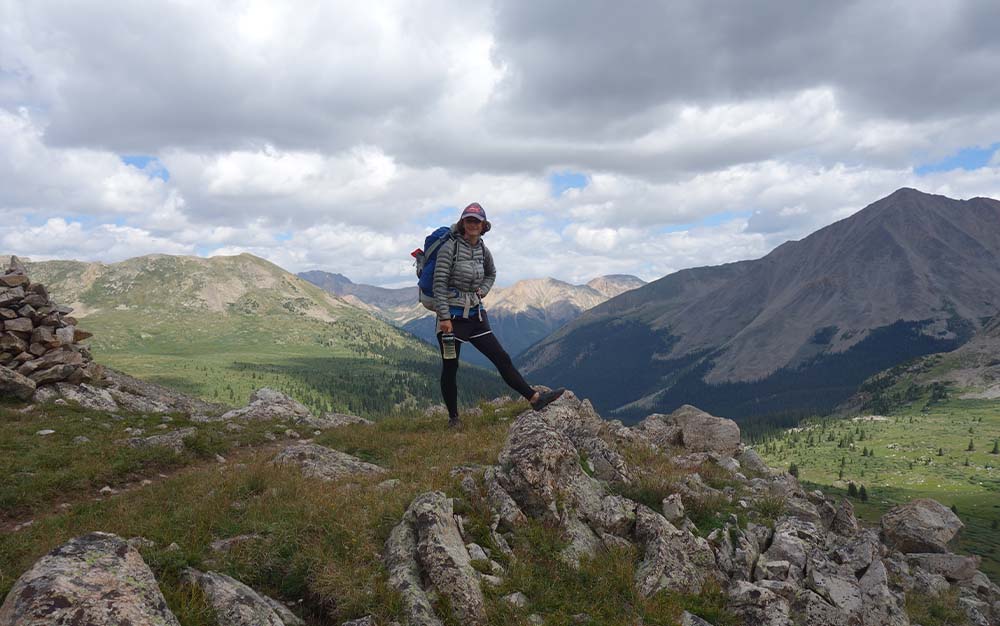
One of the hardest parts of transitioning to barefoot shoes for walking is adapting to the lack of a heel drop. While the elevated heels on traditional running shoes (which people increasingly use for everyday activities, including walking) can reduce strain and pressure on the Achilles tendon in the short term, in the long term it shortens the tendon. Socha told me that while many of the clients in his store think that giving up the cushioning will be the greater challenge, it’s really lowering heel drop. The transition time often depends on what heel drop you are starting from.
“If you’ve been in a 12mm shoe, I’m helping facilitate that with mobility activities, stretching activities, and a careful slow descent.” He described sometimes using shoes with lower heel drops, but that share other characteristics of barefoot shoes (such as Topo), to help lengthen those tendons and muscles gradually and bring people’s heels back down without injuring them.
Read Next: The Best Barefoot Shoes
Socha told me that he’s found barefoot shoes can help older individuals with concerns about their balance. “They are in a big, thick shoe with balance problems, and they don’t quite know what’s under their foot,” he said. “So what is their brain supposed to calculate? You get no information when you protect your foot with a bunch of cushioning.” He said that typically these clients find that the tradeoff of foot tenderness for increased balance is worth it.
How to Start Running in Barefoot Shoes
Of course, if you land on your heel when you run, even if you land as gently as you can, it’s still going to hurt a lot. So the foot is designed to land on the forefoot when running, at least most of the time. “Studies have shown that barefoot people tend to use more of a varied foot strike pattern than shod people do, because of that sensory input,” said Davis.
The reason forefoot striking is so common among barefoot runners is that it allows the landing force to disperse across a wider surface area than when heel striking. That’s because with forefoot strikes, the toes can splay, and the force of the impact can roll through the five metatarsal bones in the midsection of the foot, increasing surface area and spreading out the force of the impact. Forefoot striking also allows the Achilles tendon to store and release energy: “We have a long Achilles tendon for that reason,” said Davis. If your calf isn’t used to bearing that load you’re going to experience that as strain in your calf when running.
Talking to various barefoot experts, I started to realize that what I did over a decade ago — throw on some barefoot shoes and pound the pavement until I could barely walk — is pretty much the worst way to go about it. As the experts I spoke to saw it, the biggest stumbling block for transitioning to barefoot shoes is trying to go about it too quickly. “You’re gonna get some warning signs early on, like your muscles get sore,” said Davis. “If you start to feel it, give yourself a break. Let your body recover. Then gradually increase it.”
Davis recommended first waiting until you’re fully comfortable walking in your barefoot shoes, and then moving to a walk/run program. On the first day, walk briskly for 30 minutes. Take the next day off, and see how you feel. On day three, walk for nine minutes, and jog for one minute. Take the next day off again. On day five, walk for eight minutes and jog for two minutes. And so on. “Slowly replace your walking with running,” she said. She recommends doing this on a flat surface (no hills) and taking it slow. After you’ve gotten all the way to just jogging for 30 minutes, then you can start to slowly add hills and mileage, but no more than 10 to 20 percent per week.
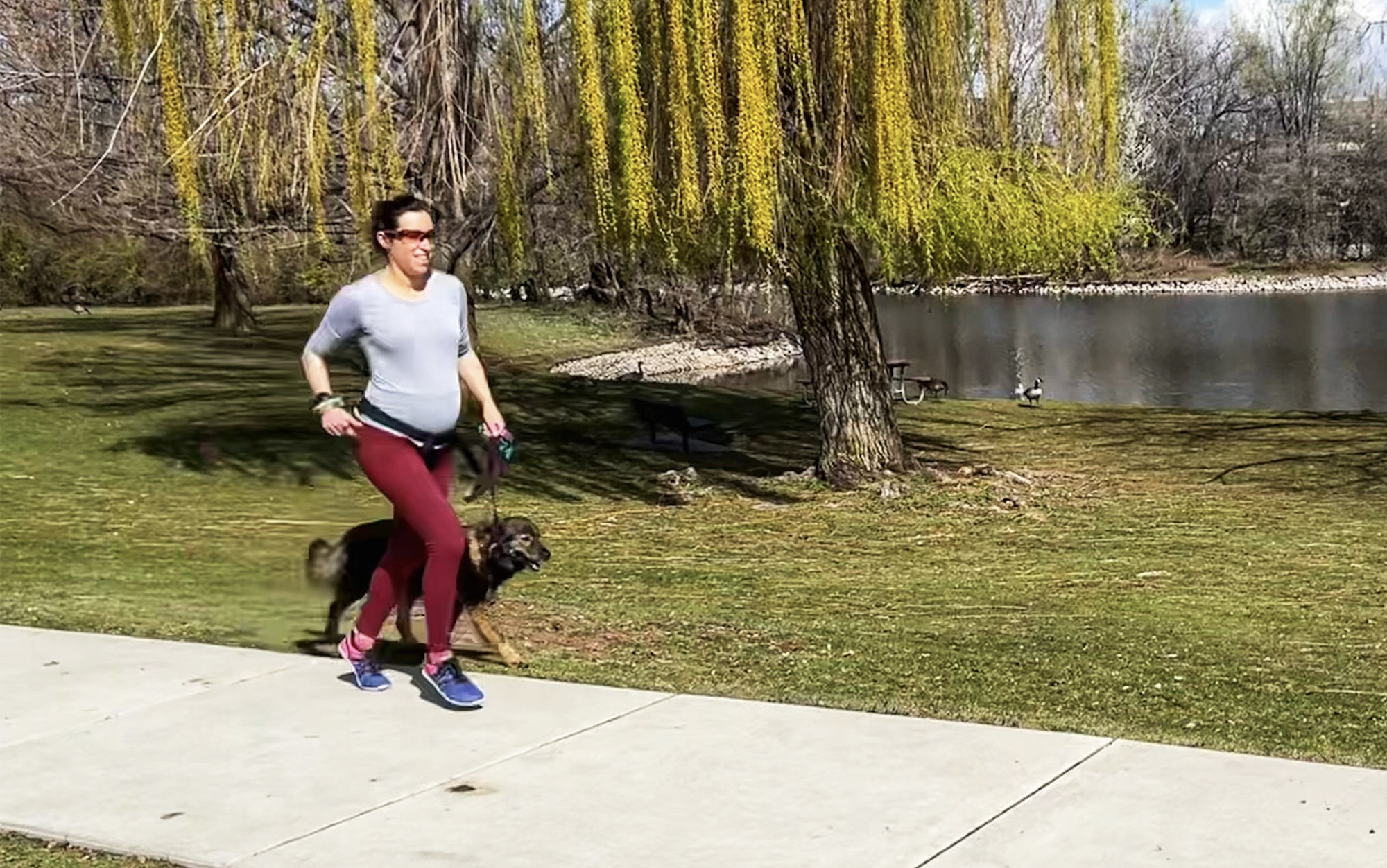
Xero Shoes
Even experienced runners will need to take it slowly. “Most runners aren’t strong enough to run in these shoes for more than five or 10 minutes at a time,” said Eric Orton, a running coach (including for Christopher McDougall). “The structural system of the foot is not strong enough to support their running or walking or hiking,” he said. “You’re using muscles that you’re not used to using, which is why it’s such a good strength tool.” He said that tight calves are typically one of the first clues that people are doing too much. He has runners new to barefoot shoes start with just five minutes (at the end of the rest of their workout), and then assess how they are feeling the next day.
Another strategy he recommends, to help learn proper barefoot form, is to start your workout indoors, without shoes and socks. The first step is to choose a song that has 180 beats per minute. “You play this song, and you run in place to the beat of the music,” he told me. In addition to teaching you good form, it’s also “tremendous strength training.” He starts them at a low interval (5 x 30 seconds), and then has them increase the length of time they run in place gradually. This also helps teach runners to shorten their stride (“you can’t overstride when running in place”), which is important to barefoot mechanics.
For some runners, that may be as far as they go on the barefoot road — and that’s OK. As Orton sees it, strengthening your feet through targeted barefoot runs is beneficial, even if you don’t convert to the shoes full time. “You can try Xero as a form-training day or a speed day,” Wadley told me. “It’s just another tool in your toolbox to help you be a better runner. A more efficient runner. It’s not black and white.”
After the worst of the transition is over, and the strain in your calves has subsided, some barefoot runners hit a different problem: They like it. A lot. “What tends to happen is that the athlete starts to enjoy the feel of these shoes,” said Orton. “And that’s where you have to also be careful. I sometimes have to back people off because they love the feel of it.” Orton says that when you start to notice that your typical cushioned running shoes are becoming uncomfortable, that may be a sign that you are getting ready to add on more mileage to your daily runs.
Signs You Shouldn’t Transition to Barefoot Shoes
Because of the drive to train, Orton told me that he typically recommends athletes start to transition to barefoot shoes in the weeks or months following a major event. So if you’re training for a marathon or iron man, wait until your big race is finished to make the switch.
Davis also shared that there are some groups of people that she doesn’t recommend transition to barefoot shoes due to health concerns: “People who don’t have good sensation in their feet, if they have any kind of peripheral neuropathy, or diabetes — if they don’t have good sensation then they should protect their feet and use cushioning.” She also doesn’t recommend barefoot shoes for people who have arthritic feet. But for people who have muscular-skeletal injuries like plantar fasciitis? “I say to them it’s like any other kind of muscular-skeletal injury. You gotta let it heal. You gotta strengthen the muscle. And then you gotta gradually start to use it.”
Exercises to Strengthen Your Feet
It would be hard to overstate how much you can do to strengthen your feet just by getting out for short walks. Multiple interviewees shared that in both their professional experience and in studies they had conducted that walking in barefoot shoes alone resulted in increased muscles in the foot. But there were a few exercises specifically targeted at strengthening the feet that they recommended.
Foot Doming
Foot doming exercises the arch of your foot and your toes.

Heel Raises
The Achilles, along with the arch of your foot, is going through the biggest change when you switch to barefoot shoes. Heel raises are a useful way to stretch your calf in preparation.

Toe Mobility
For men and women, so-called stylish shoes frequently come together at the toes at a center point. Even outdoor shoes, while not attempting to be stylish necessarily, will try to “lock in” the foot, controlling movement and, for some, providing a feeling of security, by having a more severe taper than is reflected by natural foot shape. Do this for years and it will literally change the shape of your forefoot, smashing your toes together and even contributing to the formation of bunions.
For some people, simply switching shoes (and possibly ditching their socks) is enough to help their toes achieve proper splay. If you can put your fingers between your toes at the same time, nothing further is needed. But for others, more intervention is necessary: Socha told me that he always checks to make sure his clients can wear either toe socks (such as Injini) or Correct Toes, which manually separate the toes. “We want biomechanical freedom for your toes,” said Socha. Davis went one step further, recommending trying to open and close your toes while wearing them, especially if you have bunions. Expect to struggle with this, or not be able to do it at all in the beginning.
Final Thoughts

When I talk to people about barefoot shoes, I hear a lot of curiosity, and a lot of apprehension. The experts I spoke to echoed these sentiments. “I think part of the reason why people are nervous is that they have heard that people have gotten injured because their feet are weak or they’ve gotten stress fractures,” said Davis. When the first wave of minimalist shoe enthusiasm treated it as an all or nothing, people wanted, and expected, to see instant results, the same way they do with cushioned running shoes. Strengthening your feet, just like the rest of your body, is a process that takes time. “You’ve got to use your body and your muscles to do the support and cushioning,” said Davis. “And we have all the muscles that we need.”


